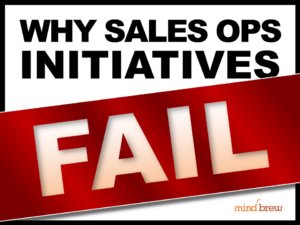A friend of ours who happens to be a parent recently told us a story about one of her teenagers. In the early days of the pandemic, this friend’s son, who was pretty technologically advanced, woke her up in the middle of the night saying that he couldn’t sleep.
He said he couldn’t stop thinking about whether he should switch from a Windows laptop to Linux. And he wanted some advice on what he should do. At three in the morning.
Fortunately, this friend didn’t give in to her first instinct, which was to yell at her son for waking her up with such a stupid question. Having been a parent for many years, she understood that her son wasn’t telling her what he was really thinking. And current events made it pretty easy to figure out what was really bothering him.
So she told him that whatever operating system he chose to use would be fine because he could always switch back if he didn’t like the change. And she also told him that even though the pandemic was scary, the family was going to do whatever they needed to do to be safe. Whatever happened, they would face it together.
The son teared up and gave his mom a hug (which he hadn’t done in a while). And then he went back to bed and got right to sleep.
It’s a sweet story — but it also highlights a common communication problem that affects people of all ages:
People don’t say what they are really thinking.
When you present a new initiative that requires a change, the people listening may respond with what sounds like reasonable objections to the plan. Or they may say that the idea seems good but the firm will need to investigate it some more before deciding. Or they may say that they don’t think someone else in the organization will approve.
These are probably just cover stories. Your colleagues are almost certainly thinking something more like one of these five statements:
- “I’m afraid of the change that this requires.”
- “I don’t think our team will be able to pull this off.”
- “I don’t care enough about this to actually move forward with it.”
- “I don’t trust this data enough to believe this will work.”
- “There are other things that are a priority for me.”
But your co-workers are probably not going to tell you any of these things out loud. They are just as unlikely to admit them as a 16-year-old boy is to say that the scary news is giving him nightmares.
Addressing these unspoken truths can be difficult. After all, you can’t be really sure exactly what anyone else is thinking if they won’t tell you.
But based on your knowledge of the culture and personalities in your organization, you can probably come up with some pretty good guesses at what the real issues are. If you get responses that seem more like stalling techniques, you can tackle the unspoken objections directly.
Even better is if you force yourself to come up with responses to these five common objections — and any others you think might be at play in your organization — ahead of time. The challenge is that it can be very difficult to come up with good counters to these statements.
However, if you go through the process of thinking through the likely objections, your proposal will be stronger. And you’ll be able to head off some of the issues in advance. By forcing yourself to address them, you’ll make your pitch far more comprehensive and give the changes you’re attempting to instill a better chance of success.
You can find more tips on persuading other people to adopt your recommendations in Being An Internal Sales Consultant, Why Sales Ops Initiatives Fail, and Making Change Happen.
Change is never going to be easy. But understanding — and addressing — unspoken concerns can make the path a little smoother.














